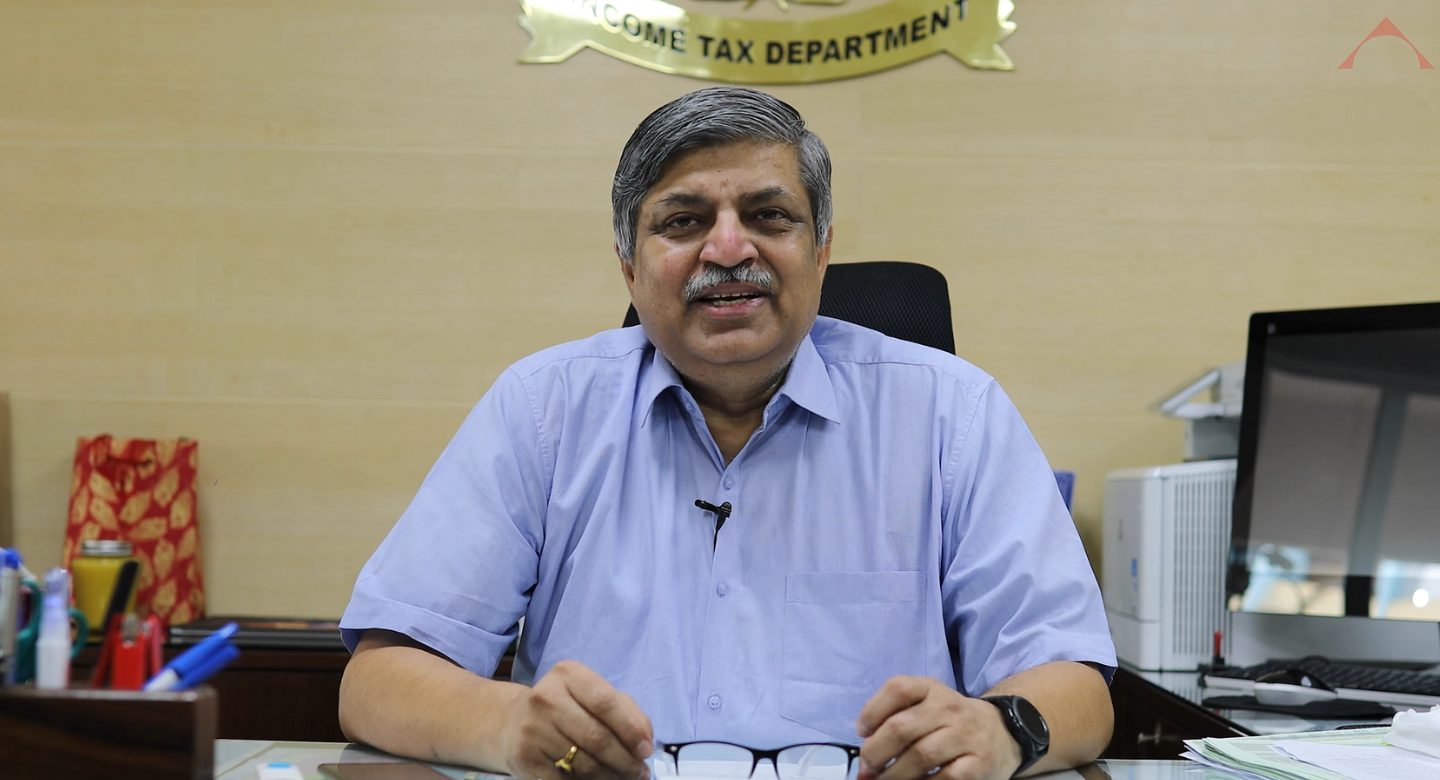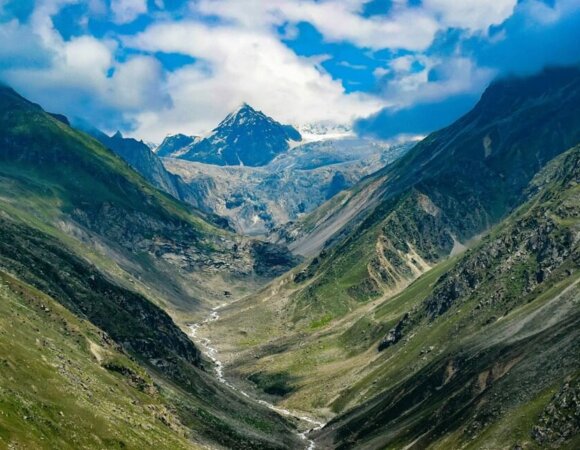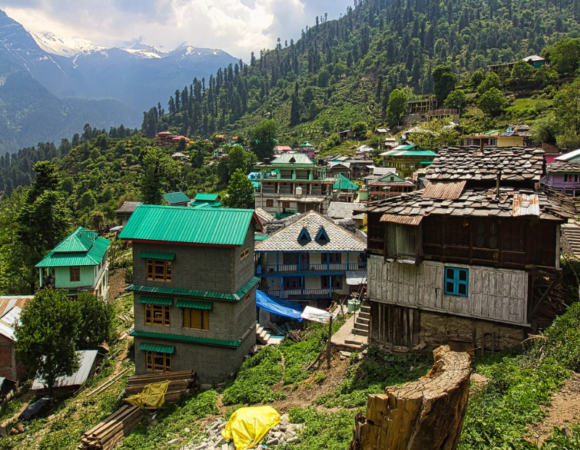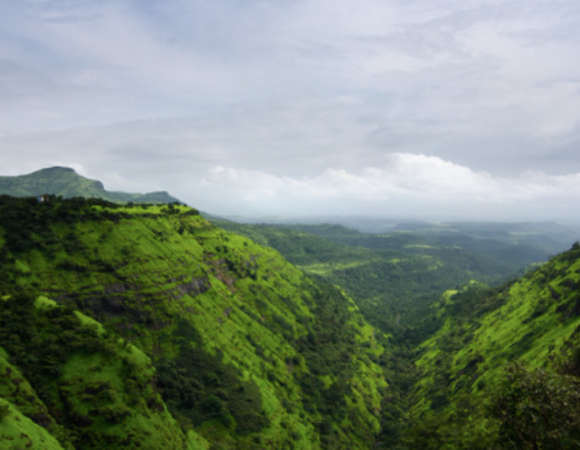Patanjali Jha: Cultivating Food Forests for Livelihood and Ecological Balance
With a Master’s degree from the Delhi School of Economics, Patanjali Jha has established himself as a distinguished government official in India. Recently, he garnered attention for his remarkable contributions during the COVID-19 crisis. However, beyond his professional achievements, Jha is also an expert in food forestry, a lesser-known yet deeply impactful aspect of his life.
Table of Contents
ToggleFor over two decades, he has been nurturing more than 100 acres of thriving food forests—60 acres in Khalghat, Madhya Pradesh, near the banks of the Narmada River, and another 40 acres in Purnia, Bihar.
A Deep-Rooted Passion for Nature
Jha’s journey into food forestry is fueled by a profound love for nature. In a candid conversation, he shared his deep understanding of the medicinal properties of native plants and his commitment to sustainable farming.

His connection with nature began with his ancestral land—10 acres in Khalghat that he purchased from his father. Collaborating with five like-minded individuals, he expanded his holdings to 60 acres. This marked the beginning of his experiment with food forestry, a concept that fascinated him from the start.
Inspired by Natural Farming Pioneers
When Jha acquired the land, much of it was barren, degraded by sand mining and the adverse effects of chemical farming. Around this time, he discovered the philosophy of Masanobu Fukuoka, a pioneer of natural farming. Drawing further inspiration from renowned botanist Albert Howard and India’s own Bhaskar Save, often called the “Gandhi of Natural Farming,” Jha decided to embrace sustainable agricultural methods.
Many doubted his approach, arguing that crops couldn’t thrive without traditional tilling and fertilizers. However, Jha firmly believed that sunlight, rain, and fertile land were sufficient for plant growth. His perseverance paid off—over the last decade, the once-barren landscape has flourished into a rich and self-sustaining ecosystem.
Building a Thriving 60-Acre Food Forest
Jha and his partners have cultivated a diverse, multi-layered food forest, mimicking natural ecosystems. The tallest trees, such as neem and babool (Acacia), form the outermost canopy, supporting creepers like guduchi (giloy), an Ayurvedic powerhouse known for its immunity-boosting properties.

In the central zone, towering moringa trees, planted in the early 2000s, coexist with citrus shrubs, including kaffir lime, sweet lime, gondhoraj lime, and several lemon varieties. The farm also nurtures indigenous crops like Badhwani papaya, traditional mango varieties, bananas, litchis, turmeric, sweet potatoes, yams, pink pepper, and jujube (ber).
One of the most crucial components of this ecosystem is vetiver grass, known for its soil-stabilizing properties. Its deep roots help retain moisture, enhance soil health, and facilitate carbon sequestration. Studies have shown that plants growing alongside vetiver thrive up to five times faster than others. Jha has incorporated this knowledge by surrounding his crops with vetiver, significantly improving their yield.
Expanding the Impact in Bihar
Jha’s influence extends beyond Madhya Pradesh. His brother-in-law, Himkar Mishra, was so inspired by Jha’s work that he left his corporate job in 2016 to dedicate himself to food forestry in Purnia, Bihar. Together, they have transformed 40 acres into a thriving farm with diverse plantations, including turmeric, yams, mangoes, litchis, berries, and nearly 100,000 gondhoraj and Thai seedless lemon plants.

A remarkable addition to this ecosystem is the cultivation of pink pepper, a species native to South America, which has adapted well to Indian soil. Thousands of moringa and subabool trees provide shade, facilitating layered sunlight harvesting. The farm also incorporates dairy farming, with cows and goats contributing to the natural ecosystem.
Empowering Local Communities
Jha’s food forestry model emphasizes the synergy between “trees and bees.” Aware of the crucial role pollinators play in agriculture, he has strategically planted marigold flowers to attract bees, ensuring robust cross-pollination. Additionally, he has maintained an apiary for the past four years, producing organic honey.
While he currently resides in Bengaluru, Jha frequently visits his farms to oversee their progress. His family members and local farmers manage day-to-day operations, though the self-sustaining nature of the food forest requires minimal human intervention beyond harvesting.
His vision has inspired over 150 farmers in Khalghat to replicate his model, collectively converting more than 4,000 acres into food forests. By proving that natural farming is not only viable but also profitable, Jha has catalyzed a shift towards sustainable agriculture in the region.
A Revolutionary Approach to Organic Farming
Jha firmly believes in minimal interference with nature. Unlike conventional organic farming, which often involves tilling and the use of compost, his method adheres strictly to the principles of permaculture. He discourages plowing, avoids excessive organic supplements, and reduces reliance on irrigation.
He describes food forestry as the “grandfather of organic farming,” emphasizing that nature thrives best when left undisturbed. “Create enough biodiversity to ensure a balance of flowers, fruits, vegetables, birds, bees, and insects—all coexisting harmoniously,” he advises.
Jha often cites the example of the Yamuna River, which saw significant improvement in water quality when human activities were restricted during the pandemic. “If 10,000 people in India adopt food forestry today, it can sustain 50,000 individuals in the coming years,” he asserts.

Vanya Organics: A Testament to Sustainability
Jha’s commitment to natural farming is encapsulated in Vanya Organics, a 40-acre farm near Indore. Unlike conventional organic farms with neatly arranged crops, Vanya resembles a lush forest, where trees, vines, and roots grow freely, creating a vibrant ecosystem.
At Vanya, the sun first nourishes the tallest moringa trees before filtering down to citrus plants, vetiver grass, and underground crops like turmeric and sweet potatoes. Guduchi creepers entwine around neem trees, forming a naturally symbiotic relationship.
By integrating ecological principles with agricultural productivity, Jha has demonstrated that food forests are not just about sustainability—they are about abundance. His work is a blueprint for restoring degraded land, ensuring food security, and fostering a deep connection between people and nature.
Final Thoughts on Patanjali Jha: Cultivating Food Forests for Livelihood and Ecological Balance
Jha’s journey is a testament to the power of regenerative agriculture. His work has inspired countless individuals to rethink their relationship with the land, emphasizing that food forests can simultaneously nourish people and heal the planet.
By embracing food forestry, we can move towards a more sustainable future—one where nature and humanity thrive in harmony. As Jha aptly puts it, “Nature is kind and giving; we just need to let it flourish.”
“Nature is kind and giving; we just need to let it flourish.”
Read More Such Stories
Dr. Rajendra Singh: Waterman of India
Aadavi: The World’s First Carbon-Neutral Baby
Kham River Restoration – A Case Study
Radhe Shyam Bishnoi: The Guardian of the Great Indian Bustard
D. Saravanan – Transforming Barren Land into a Thriving Forest








[…] Patanjali Jha – Creating Food Forests for Livelihood & EcologyD. Saravanan – Transforming Barren Land into a Thriving ForestSonam Wangchuk – The Changemaker Fighting Climate Change […]
[…] Radhe Shyam Bishnoi: The Guardian of the Great Indian BustardPatanjali Jha – Creating Food Forests for Livelihood & Ecology […]